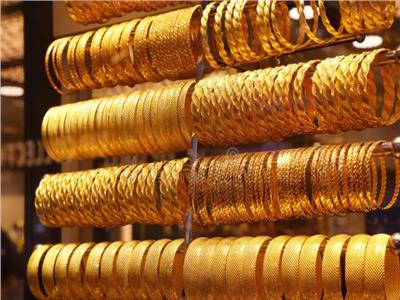Gold Prices Dip Amid Dollar Rise and Anticipation of US Federal Reserve's Policy Meeting
As the US Federal Reserve gears up for a pivotal policy meeting, gold prices reflect heightened global economic scrutiny, balancing central bank actions with investor sentiment.
Published April 30, 2024 - 16:04pm

Image recovered from shorouknews.com
The prices of gold have retreated amid a surge in the US dollar and a focus shift towards the closely-watched meeting of the Federal Reserve's monetary policy. As global economies brace for more insights into future fiscal direction, the prospects of precious metals remain intertwined with central bank decisions and broader market indicators.
Gold prices fell as dwindling hopes for an early US interest rate cut this year came to light. The precious metal saw a decrease in value during spot transactions, signifying a cautious investor approach in anticipation of the Federal Reserve's next steps. Market participants remain keyed in on the Fed's two-day meeting, as well as upcoming non-farm payroll data, to gauge potential monetary policy shifts.
In Egypt, the price of gold dropped by about 10 Egyptian pounds, lowering the popular 21-carat gold to 3,090 pounds from 3,100 pounds at the end of the previous day's trading. This comes at a time when the global spot prices also decreased by 0.5% to $2,327.09 per ounce.
On the other hand, prices of other precious metals like silver, platinum, and palladium showed fluctuations too. Inevitably, the movements in these commodities reflect broader economic challenges and investor strategies focusing on safe-haven assets against a backdrop of geopolitical tensions and monetary policy expectations.
As the Federal Reserve is expected to maintain interest rates between 5.25% and 5.5%, the gold market, typically sensitive to interest rate changes, is preparing for potential volatility. A single interest rate cut is anticipated by traders later this year, despite Federal Reserve officials signaling a tough stance on inflation control and interest rates.
The prices of gold have retreated amid a surge in the US dollar and a focus shift towards the closely-watched meeting of the Federal Reserve's monetary policy. As global economies brace for more insights into future fiscal direction, the prospects of precious metals remain intertwined with central bank decisions and broader market indicators.
Gold prices fell as dwindling hopes for an early US interest rate cut this year came to light. The precious metal saw a decrease in value during spot transactions, signifying a cautious investor approach in anticipation of the Federal Reserve's next steps. Market participants remain keyed in on the Fed's two-day meeting, as well as upcoming non-farm payroll data, to gauge potential monetary policy shifts.
In Egypt, the price of gold dropped by about 10 Egyptian pounds, lowering the popular 21-carat gold to 3,090 pounds from 3,100 pounds at the end of the previous day's trading. This comes at a time when the global spot prices also decreased by 0.5% to $2,327.09 per ounce.
On the other hand, prices of other precious metals like silver, platinum, and palladium showed fluctuations too. Inevitably, the movements in these commodities reflect broader economic challenges and investor strategies focusing on safe-haven assets against a backdrop of geopolitical tensions and monetary policy expectations.
As the Federal Reserve is expected to maintain interest rates between 5.25% and 5.5%, the gold market, typically sensitive to interest rate changes, is preparing for potential volatility. A single interest rate cut is anticipated by traders later this year, despite Federal Reserve officials signaling a tough stance on inflation control and interest rates.
Amid these speculations, the US dollar Index, which measures the greenback against a basket of other major currencies, reached a new peak, illustrating the currency’s robust performance across the board. A stronger dollar generally makes gold more expensive for holders of other currencies, thus dampening demand. The ongoing geopolitical frictions, especially the tensions in Eastern Europe and parts of Asia, have also injected a degree of risk aversion into the markets, leading to a rally in the dollar.
Furthermore, the implications of supply chain disruptions, as witnessed in recent years, continue to inform gold price projections. With pivotal industries and manufacturing sectors facing component shortages and longer lead times, gold's role as a hedge against inflation could modify as central banks tighten monetary policy to mitigate price pressures.
Looking at historical patterns, gold’s performance has frequently been inversely related to the yields on US Treasury securities. As bond yields rise, in expectation of rate hikes or robust economic data, non-yielding bullion becomes less attractive to yield-seeking investors. Subsequently, bonds and other interest-bearing assets may siphon off some demand from gold, though it remains a popular portfolio diversifier.
Analysts are also keeping an eye on the consumer price index and other inflation indicators to predict how stringent the Federal Reserve might be in easing its policy. If inflation pressures do not subside as predicted, the central bank might opt for a more hawkish approach, potentially further impacting gold prices negatively. Conversely, should inflation indicators show a marked improvement, the Fed may have more room for maneuver, potentially benefitting gold's value.
Gold might also be influenced by retail and institutional investors' sentiment. As digital currencies and technology stocks have faltered, some investors have looked to gold as a more stable investment during times of uncertainty. Even with the Federal Reserve’s hawkish stance, economic uncertainties stemming from potential new variants of the coronavirus and disruptions in the global markets due to the pandemic may bolster gold's appeal as a safe-haven asset.
In conclusion, while short-term fluctuations are expected, the long-term trajectory for gold will likely be shaped by a complex interplay of economic data, central bank policy decisions, geopolitical developments, and underlying supply and demand dynamics. Investors, therefore, continue to monitor these myriad factors closely, as they assess the future of gold and its role in their investment strategies.
:quality(70)/cloudfront-eu-central-1.images.arcpublishing.com/irishtimes/SV5HVQWI7BV6H65746THQB7QAM.jpg)






